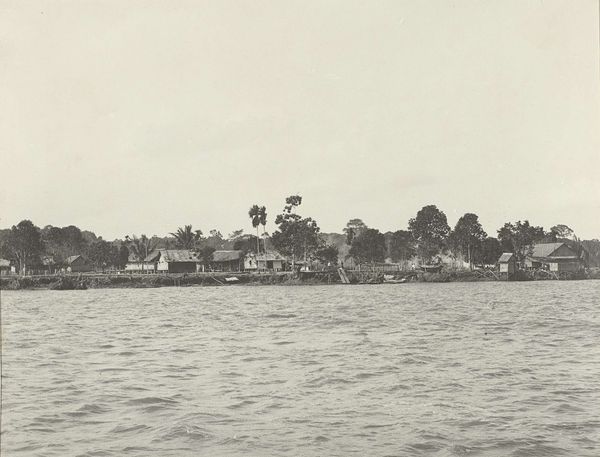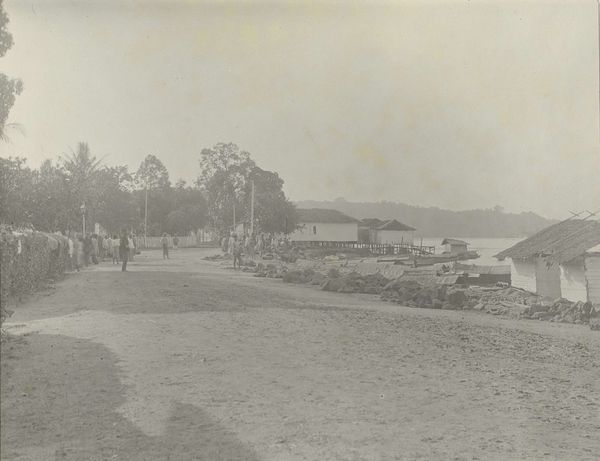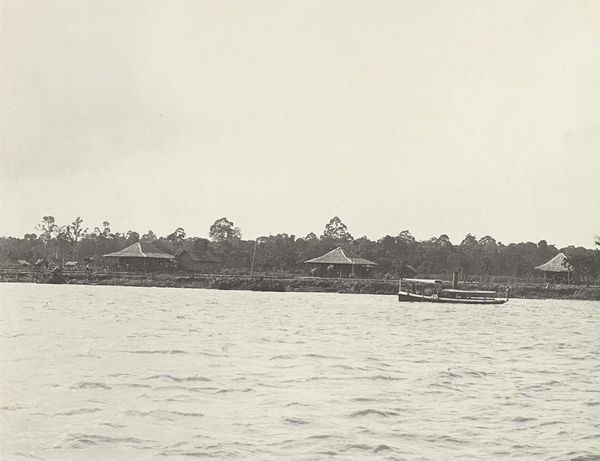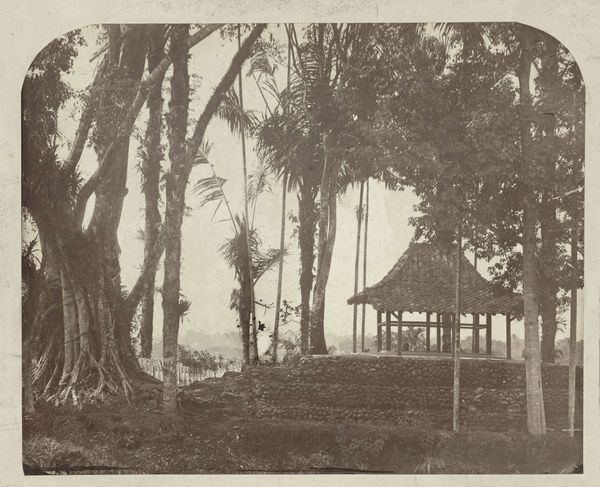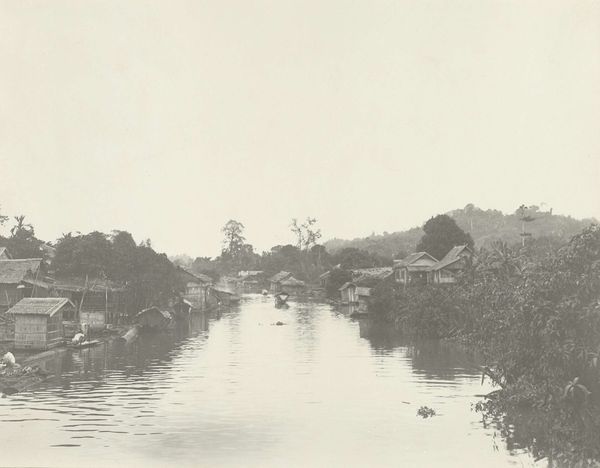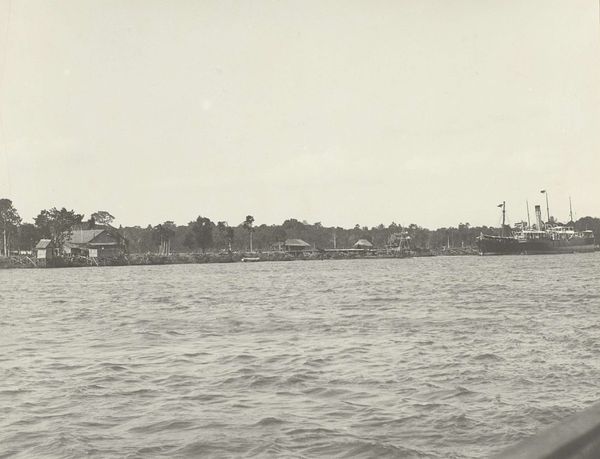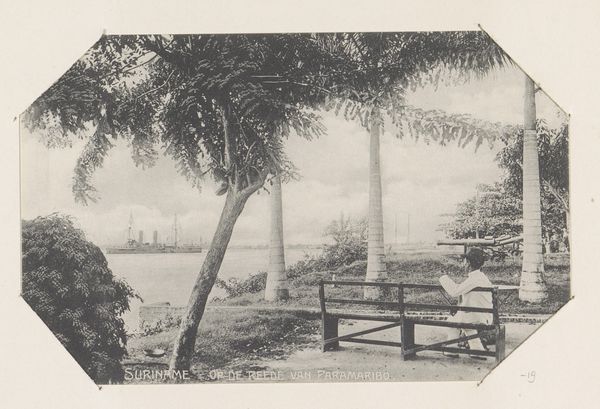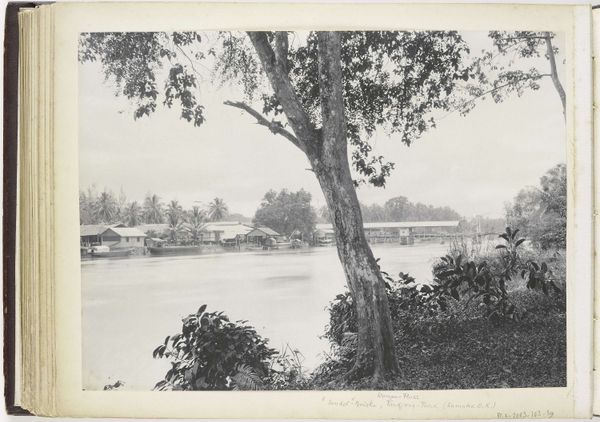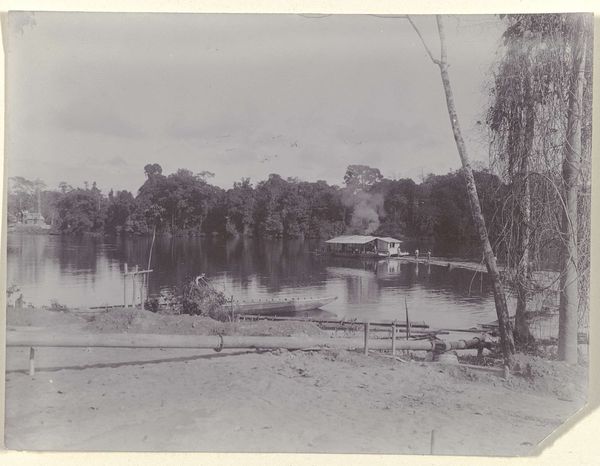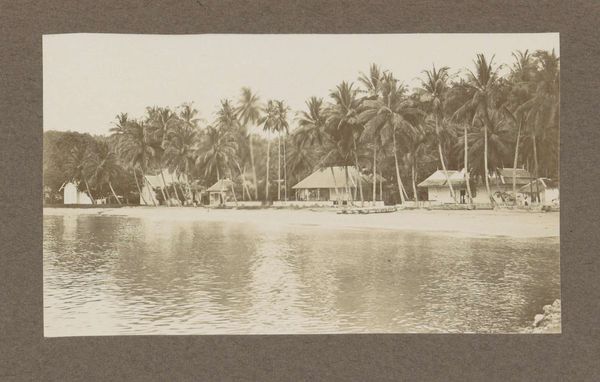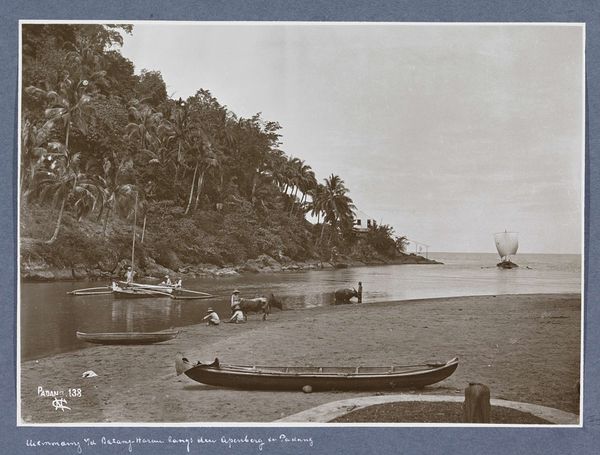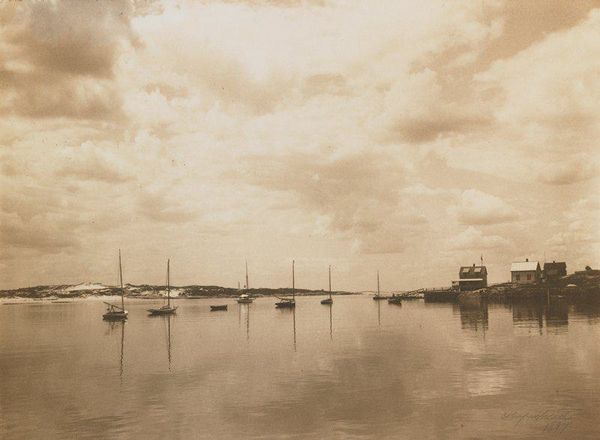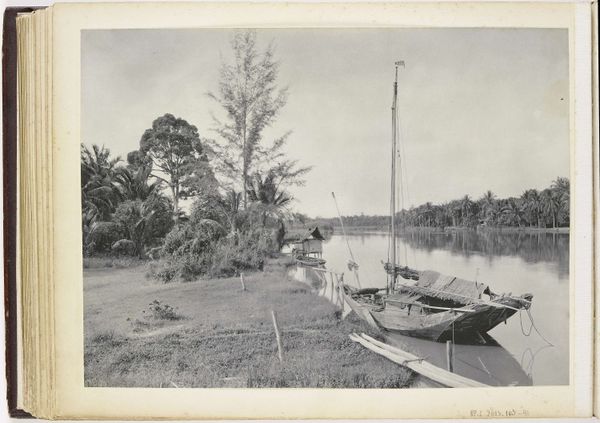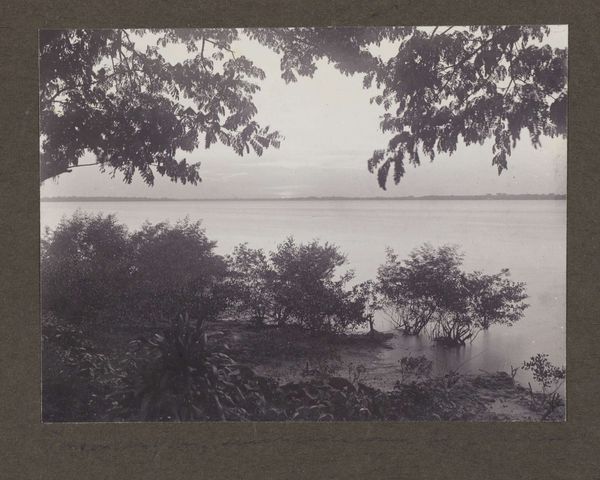
photography
#
landscape
#
photography
Dimensions: height 215 mm, width 280 mm, height 385 mm, width 440 mm
Copyright: Rijks Museum: Open Domain
Editor: This is a photograph titled "Steiger aan de waterkant," placing it roughly between 1903 and 1907. It's visually very still, a quiet scene despite what must have been people and activity. What strikes you first about the formal elements at play? Curator: The composition immediately suggests a tripartite structure. The foreground is established by textured vegetation, drawing the eye deeper. A very striking tonal range directs our focus; let us consider the gradation of light as a structural principle within this composition. What elements guide your own eye through the picture plane? Editor: I think the tree acts as a central anchor, almost dividing the two other parts – the waterscape and the architecture, with the dock running across to connect them. Is that too literal of a reading? Curator: Not at all, a valid entry point. Consider how the tonality contributes to a sense of depth; lighter shades representing recession, darker areas creating weight and solidity. And have you considered how the photograph plays with implied lines—where our eyes are guided by suggestion rather than explicit delineation? Editor: The line of the dock and the horizon obviously create strong horizontal references, though they appear hazy. I’m wondering how you would describe the role of materiality. Does knowing this is photography and not another medium, impact the reading? Curator: Yes, knowing that it is photography has impact; but regardless, note how light acts materially, reflecting off water, or creating texture in foliage, transforming light into a physical property as well. This photographic strategy shapes not just representation but also a tactile dimension, one emphasizing the medium’s ability to capture light as matter. A dialogue, one might say. What, then, do we make of the artist's intervention here? Editor: I’m interested in how this shifts my perspective to be much more closely engaged with these intrinsic qualities you describe, rather than external assumptions. Curator: Indeed, and that shift encourages us to value the work not as a mirror, but as a thing in itself.
Comments
No comments
Be the first to comment and join the conversation on the ultimate creative platform.
